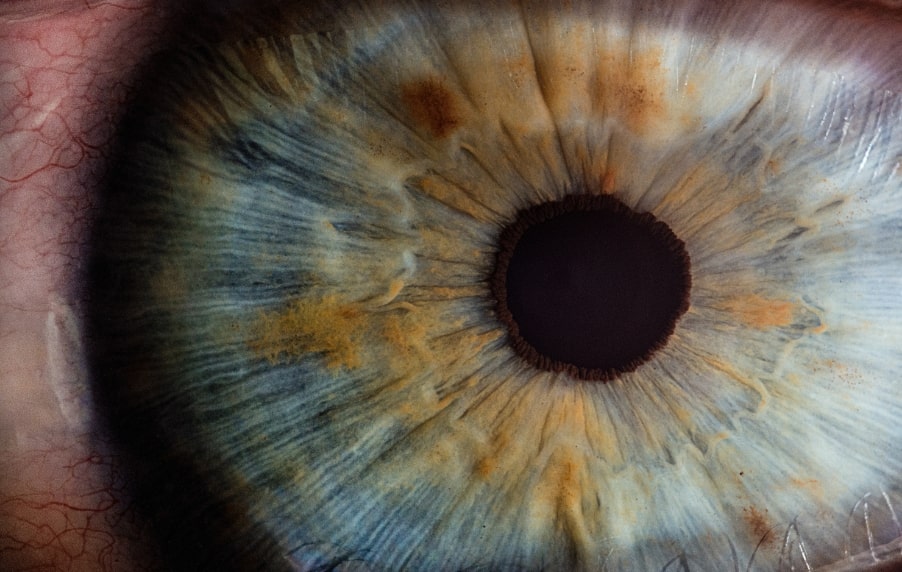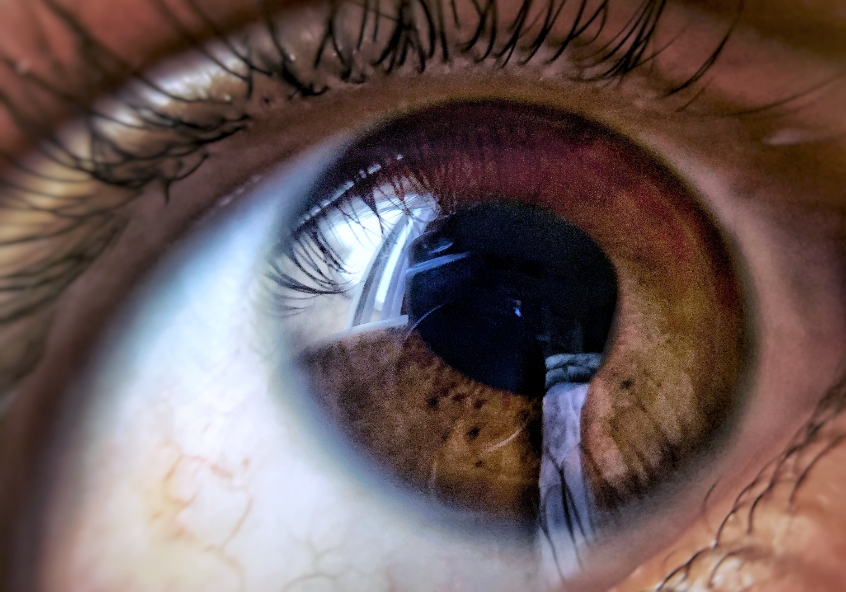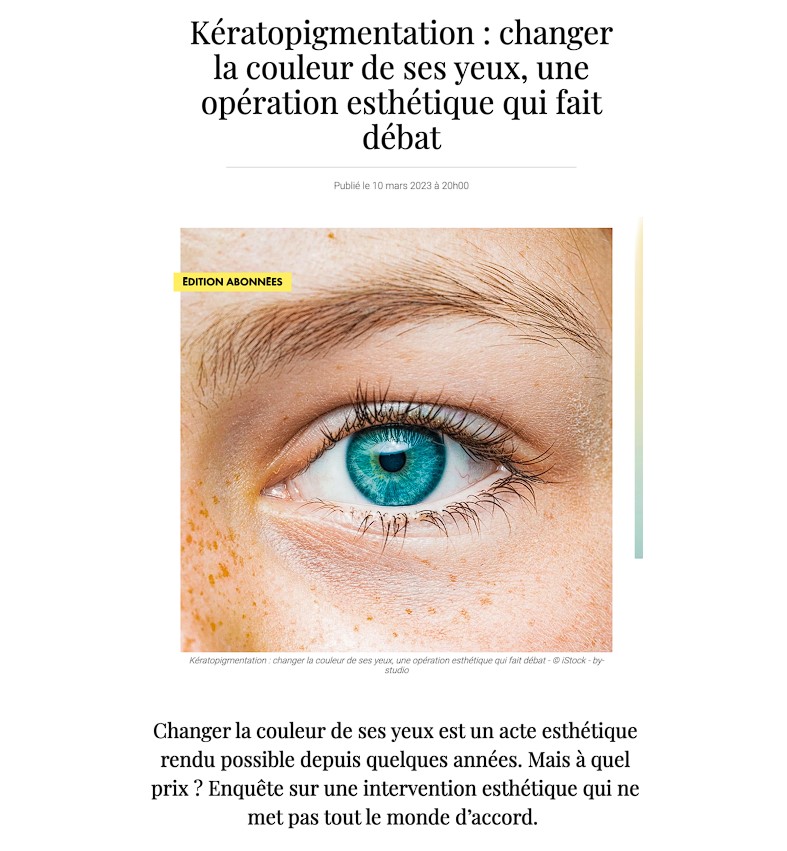FLAAK (keratopigmentation) in Paris
Dr Cyril Maillon
Practised in PARIS by Dr MAILLON at the Lamartine Clinic, FLAAK (keratopigmentation) is now the reference technique for changing eye colour.
Initially used for therapeutic purposes, FLAAK (keratopigmentation) was developed in the 2000s for reconstructing the eyes and traumatic irises.
Since 2010, the safety of the pigment, which is biocompatible with the cornea, the quality of the results obtained and patient satisfaction have led to the technique being extended to aesthetic indications.
Its safety has now been demonstrated: no serious complications have arisen in over 1,000 patients operated on to date.
How much does bilateral corneal FLAAK (keratopigmentation) cost?
7000 euros including VAT. Download the quote
FLAAK (keratopigmentation)
FLAAK (keratopigmentation) in Paris
The pre-operative assessment
The assessment includes a measurement of corrected visual acuity.
An elevation corneal topography to obtain a precise 3D analysis of the shape and thickness of the cornea.
Specular analysis of the cornea to quantify the quantity of endothelial cells.
A pre-operative simulation can be carried out with an image consultant to enable the patient to choose his or her colour as accurately as possible.
The interview with the surgeon, who will explain to the patient in great detail all the ins and outs of the operation.
At the end of the consultation, a written consent form explaining the ins and outs of the operation will be given to the patient and must be signed and returned before the operation.

Dr Cyril Maillon
FLAAK (keratopigmentation) in Paris

Evolution of the result
Even if the new colouration is visible immediately after the operation, it is neither the definitive colour nor intensity; the final result is only obtained after a few weeks, about a month.
During this period, a natural phenomenon of resorption gives a “patina” effect to the pigment, making the result less artificial. The result of keratopigmentation (FLAAK) using the FLAAK (keratopigmentation) technique thus becomes increasingly natural over time.
Touch-up procedure
In some cases, the intensity or colour of the pigment may fade over time.
This resorption is natural and can be increased by various factors: exposure to the sun without protective glasses and a lifestyle with aggravating factors.
A touch-up can then be envisaged to restore the initial radiance of the FLAAK (keratopigmentation) or to make it stronger.
If necessary, a touch-up can be carried out, but it is not advisable to carry out more than 3 touch-ups.
Outpatient: the operation does not require hospitalisation; it is performed on an outpatient basis, i.e. the patient is not admitted to the hospital and can leave approximately one hour after arrival.
Duration: 30 to 45 minutes for both eyes (in the same session).
Type of anaesthetic: the operation is performed under local anaesthetic (topical) by instilling an anaesthetic eye drop. The operation is therefore completely painless. Pre-medication with LEXOMIL 30 minutes beforehand is strongly recommended to reduce the harmful effects of stress during the operation.
Surgical technique: FLAAK® (Femto Laser Aesthetic Annular Keratopigmentation) comprises 2 stages creation of a micro-tunnel in the thickness of the cornea with the VisuMax Femtosecond laser (Zeiss), the only Femtosecond laser capable of producing 100% laser FLAAK (keratopigmentation), leaving the pupillary zone and the central 5 mm intact.
The dye is introduced into the tunnel, masking the natural colour of the iris.
The surgeon introduces the NEORIS pigment as evenly as possible into the tunnel. The pigment is distributed harmoniously by the surgeon until the desired effect is achieved. In the periphery, as found on a natural eye, a darker, more or less fine peri-limbic ring is deliberately left without pigment to give more contrast to your eyes.
Immediate post-operation: As soon as the patient leaves the operating theatre, he or she can appreciate the result using a mirror. This moment is often emotionally rich for patients, who immediately feel a very intense joy at the sight of the result.
Post-operative follow-up: An initial compulsory check-up takes place the morning after the operation.
A second compulsory check-up takes place after 3 months to assess the final result of the operation. Eye drops are prescribed, including an antiobiotic/anti-inflammatory for 15 days and moisturising eye drops for 30 days.
Dr Cyril Maillon
FLAAK (keratopigmentation) in Paris
The laser used
The laser used is the same as that used to correct myopia, namely the Femtosecond laser.
This type of laser revolutionised refractive surgery in the 2000s, providing greater safety and precision for femto lasik and smile.
Every year, several million patients around the world benefit from this technology to safely correct their refractive errors.
For FLAAK (keratopigmentation), the laser is used to create a micro-tunnel within which the pigment is distributed.
This ‘tunneling’ technique has been used since 2004 in surgery for keratoconus (corneal disease) and the insertion of intra-corneal rings in the tunnel.
Of all the Femtosecond lasers, only the VisuMax Femtosecond laser from the German manufacturer Zeiss can be used to create the micro-tunnel and its 2 access ports 100% automatically to introduce the pigment.
The automation of the laser incisions and the absence of manual incisions using a scalpel, as required by other Femtosecond lasers, means that the pigment can be introduced in a very short time.
PIGMENTS:
The dyes used are all CE approved and have been shown to be safe for the cornea:
HONEY GOLD
EMERALD GREEN
BROWN
BLUE RIVIERA
TROPICAL GREEN
JADE GREEN
PACIFIC BLUE
MAGICAL GREY
HAZELNUT
OCEAN
SAND
OLIVE GREEN
Dr Cyril Maillon
FLAAK (keratopigmentation) in Paris
Corneal FLAAK (keratopigmentation) consists of:
The first consists of creating a femtosecond laser micro-tunnel around the periphery of the cornea, respecting the central pupillary zone.
The space created in the cornea is then dissected and the surgeon applies the pigment evenly, like a painter with a brush, until the desired colour is obtained.
A quick, painless operation
The operation is performed under local anaesthetic (eye drops) and lasts less than an hour.
The operation does not require you to enter the eye and is performed on the “surface” in the thickness of the cornea.
A very safe operation
The use of the VISUMAX femtosecond laser, the only laser that currently complies with the specifications for this operation.
The use of well-tolerated dyes manufactured in France that have undergone multiple certification procedures.
A precise and reproducible surgical technique with specific steps and instruments.
To date, a thousand patients have been successfully operated on in this way, without any serious complications.
Touch-up surgery is possible
Today, it is already possible to strengthen or reduce the intensity of the colour initially chosen. This is known as retouching.
Soon, it will be possible to return to your natural colour, and the operation will be reversible.
FLAAK (keratopigmentation)
Dr Maillon's article

FLAAK (keratopigmentation): CHANGING THE COLOUR OF YOUR EYES, AN AESTHETIC OPERATION
